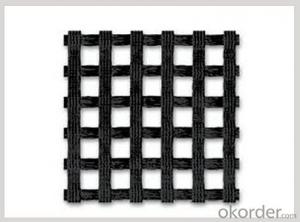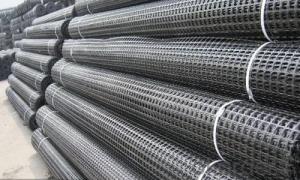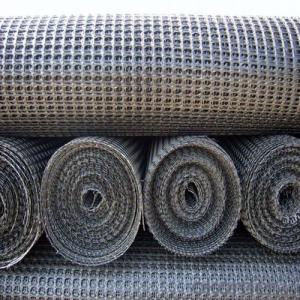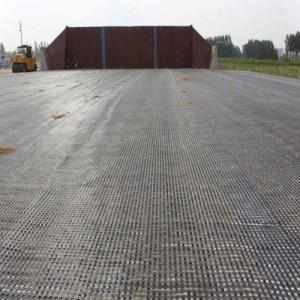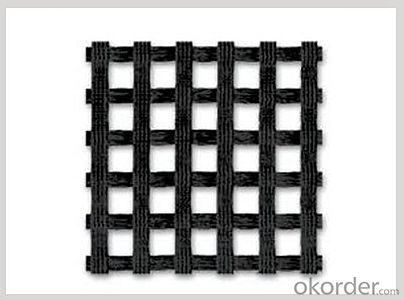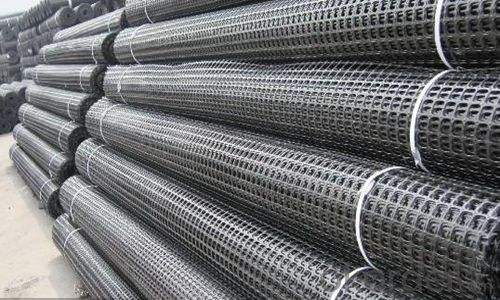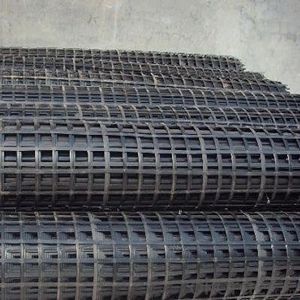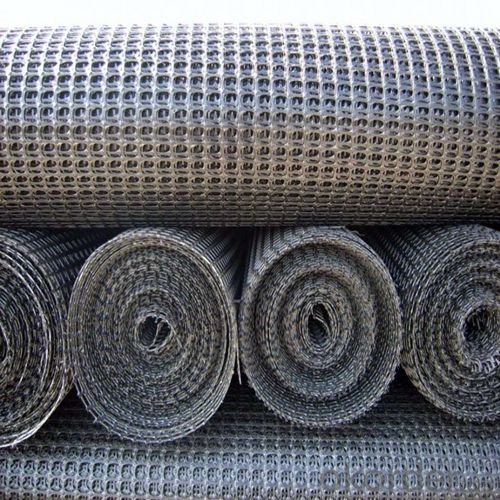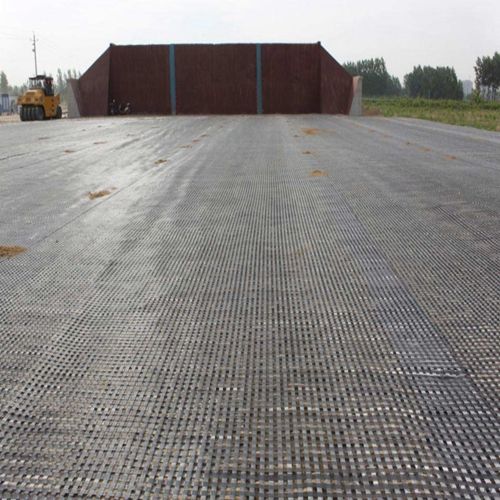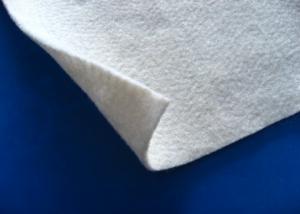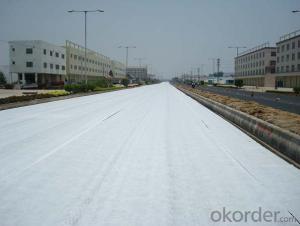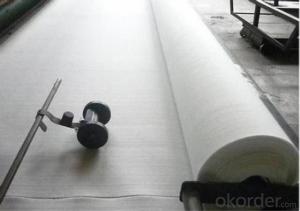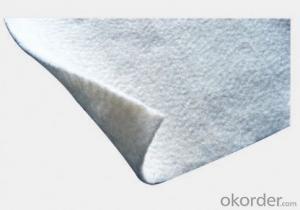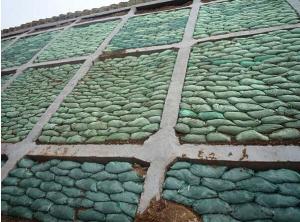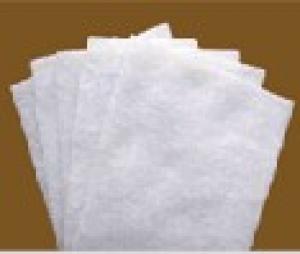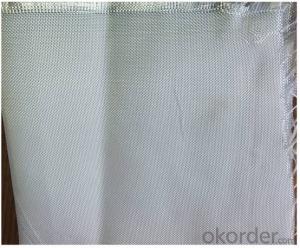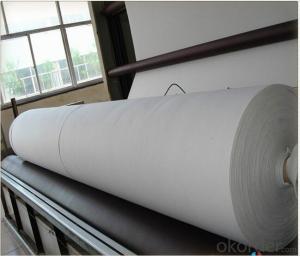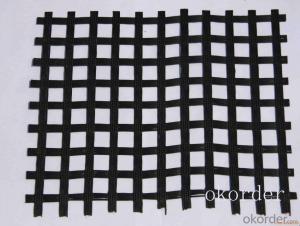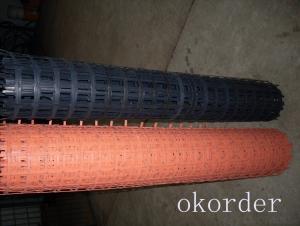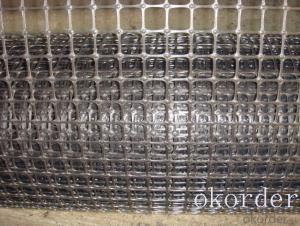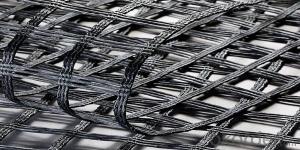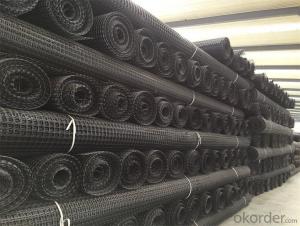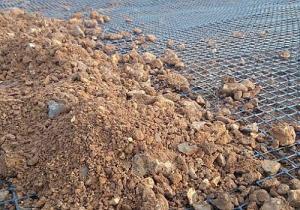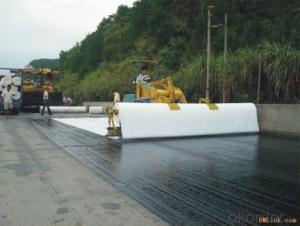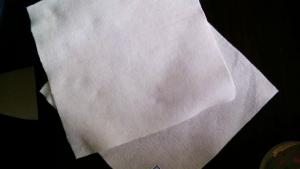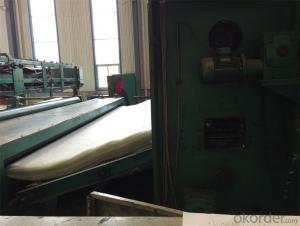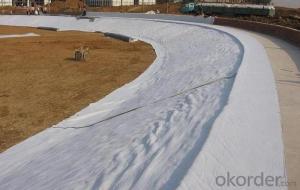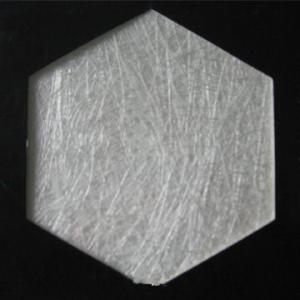Geotextile Fabric UK - Fiberglass Geogrid Polyethylene for Civil Engineering Construction
- Loading Port:
- China main port
- Payment Terms:
- TT OR LC
- Min Order Qty:
- 1000 m²
- Supply Capability:
- 1000000 m²/month
OKorder Service Pledge
OKorder Financial Service
You Might Also Like
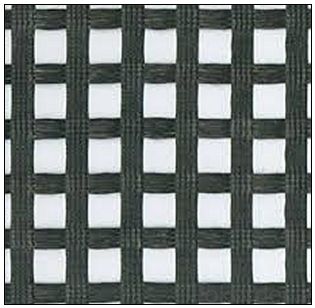
Porducts Description
Type:
Geogrids
Place of Origin:
Shandong, China (Mainland)
Brand Name:
CMAX
Model Number:
20KN/M--50KN/M
Material:
Plastic
width:
1-6m
Certificate:
CE,ISO
Fiberglass geogrid is a kind of planar mesh material using alkali-free fiberglass yarn as base body and then coated with high quality modified asphalt. It is warp knitted with oriental structure which gives full play of yarn strength and improves its mechanical property to make the product high tensile, tearing and creep-resistant. Moreover, the composite property of coating with asphalt makes full protection of the fiberglass matrix and greatly improves its wear and shear resistance. All the advantageous functions make the product have a good performance in pavement strengthening, track cracking and solving difficulties of strengthening the bituminous pavement.
Our Service
Quality assurance
1.On a regular basis or as per your request,we entrust national testing agencies to conduct quality inspections
2. Strictly in accordance with the ISO9001-2008 international quality system standard,we monitor and manage the whole process throughout production,quality testing,and measurement to ensure product quality
3. For quality-related construction delay or substandard construction(except for damage or losses due to customer’s responsibility or irresistible natural disasters),we have refunding,replacement,and repair services.We will respond to customers’ feedbacks on quality issues within 24 hours.
Packaging & Shipping
Packing: PLASTIC FILM INSIDE, AND WOVEN BAG OUTSIDE
Shipping: About 15 days after receipt the deposit
FAQ:
Q: What kind of payments does jenor support?
A: T/T, L/C, Cash are accepted.
Q: Do you charge for the samples?
A: Accordeing to our company policy, the samples are free, we only charge the freight fee. And we will return the freight fee during the next order.
Q: Can you produce according to customers' design?
A: Sure, we are professional manufacturer, OEM and ODM are both welcome.
Q: Do you have other products?
A: Yes, please check the pictures:
- Q: What is a geotextile?
- A geotextile is a synthetic material specifically designed for use in various civil engineering and construction applications. It is typically made from polyester or polypropylene fibers and is used to stabilize soil, separate different layers of soil, and provide drainage and filtration in infrastructure projects such as roads, landfills, and retaining walls. Geotextiles are essential in preventing soil erosion, improving soil strength, and increasing the lifespan of infrastructure projects.
- Q: Are geotextiles resistant to freeze-thaw cycles?
- Yes, geotextiles are typically resistant to freeze-thaw cycles. They are designed to withstand extreme weather conditions, including freezing temperatures and repeated cycles of freezing and thawing without significant deterioration or damage.
- Q: Can geotextiles be used in geosynthetic clay liner applications?
- Yes, geotextiles can be used in geosynthetic clay liner applications. Geotextiles are often used as a protective barrier on both sides of the geosynthetic clay liner to enhance its performance and prevent punctures or damage. They help in retaining fine particles within the liner while allowing water to pass through, making them an essential component in geosynthetic clay liner applications.
- Q: How do geotextiles prevent soil erosion on slopes?
- Geotextiles prevent soil erosion on slopes by providing a stable and protective layer that helps retain the soil in place. These synthetic materials are placed on the slope and act as a barrier, preventing the soil from being washed away by rainfall or runoff. Geotextiles also promote proper drainage, allowing excess water to flow through while retaining the soil particles. This helps to maintain the integrity of the slope and reduce erosion caused by water movement.
- Q: Geotextile gbt-2008.200g / m2 test standard value
- GB / T-2008 is the national executive standard for filament woven geotextile. 200g / ㎡ of the filament woven geotextile warp rupture strength ≥ 50KN / m, zonal rupture strength of the rupture strength of 0.7-1.0 times the elongation at break ≤ 35% weft ≤ 30% , The width of the deviation of -1.0%, CBR breaking strength ≥ 4.0KN, the equivalent aperture O900.07-0.5mm, the vertical permeability coefficient (1.0 ~ 9.9) × (10 negative square ~ 10 negative five times), tear Breaking strength ≥ 0.8KN, irrigation thickness deviation of ± 8%, length and width deviation of ± 2%, sewing strength ≥ breaking strength × 50% KN / m, which irrigation thickness deviation, length and width deviation, sewing strength only on the mold Bag cloth assessment. Under the GB / T-2008 GB standard.
- Q: What are the key considerations for geotextile installation in seismic zones?
- The key considerations for geotextile installation in seismic zones include the selection of appropriate geotextile materials, careful placement and anchoring of the geotextile to withstand seismic activity, and ensuring proper design and engineering to account for the dynamic forces generated during earthquakes. Additionally, the geotextile installation should be done in accordance with local building codes and regulations specific to seismic zones to ensure the safety and effectiveness of the geotextile system.
- Q: Can geotextiles be used in the protection of culverts?
- Yes, geotextiles can be used in the protection of culverts. Geotextiles are permeable fabrics that are commonly used in civil engineering projects to enhance drainage and soil stabilization. When used in culvert protection, geotextiles can prevent soil erosion and filter out fine particles, allowing for proper water flow while protecting the culvert from debris and damage.
- Q: Whether the reservoir is geotextile or geomembrane is good
- Composite geomembrane and geomembrane can be. Detailed consultation to see the information
- Q: What are the environmental considerations of geotextiles?
- Geotextiles have several environmental considerations, both positive and negative. On the positive side, geotextiles can help prevent soil erosion, reduce sedimentation in water bodies, and improve the stability of slopes and embankments, ultimately leading to the preservation of natural habitats. Additionally, geotextiles are often made from recycled materials, such as plastic bottles, which can help reduce waste and promote sustainability. However, there are also potential negative environmental impacts associated with geotextiles. The production and disposal of geotextiles can contribute to pollution, particularly if non-recycled materials are used. Additionally, if not properly installed or maintained, geotextiles can cause unintended consequences, such as altering natural drainage patterns or obstructing the movement of wildlife. Therefore, it is important to carefully assess the environmental implications of using geotextiles and ensure proper installation, maintenance, and disposal practices to mitigate any potential negative impacts.
- Q: Concrete maintenance with geotextile, Tonglu how to buy
- Huazhi geotextile material manufacturers
Send your message to us
Geotextile Fabric UK - Fiberglass Geogrid Polyethylene for Civil Engineering Construction
- Loading Port:
- China main port
- Payment Terms:
- TT OR LC
- Min Order Qty:
- 1000 m²
- Supply Capability:
- 1000000 m²/month
OKorder Service Pledge
OKorder Financial Service
Similar products
Hot products
Hot Searches
Related keywords
